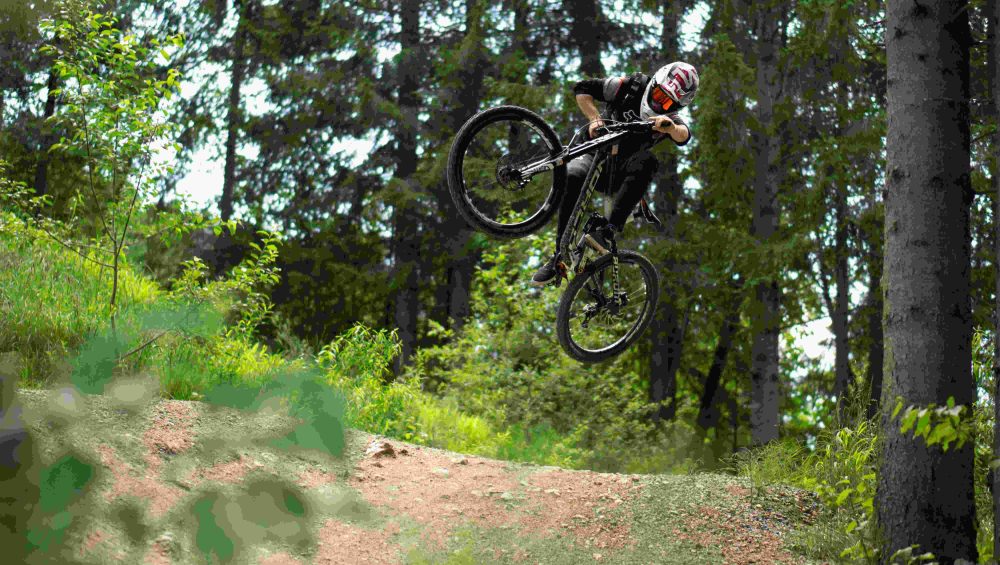Health benefits of biking workouts!
Are you on a quest for fitness and health? Look no further than the open road, as biking emerges as a stellar choice for achieving your wellness goals. In this comprehensive guide, we’ll delve into the intricacies of biking workouts, exploring the muscles that benefit the most from this low-impact yet high-reward activity. Whether you’re a seasoned cyclist or just strapping on your helmet for the first time, understanding the muscles engaged and the health benefits reaped will enhance your biking experience.
Muscles at Work
Cycling is a fantastic way to engage various muscle groups simultaneously. Pedaling activates your quadriceps, hamstrings, and calf muscles, while the continuous motion helps tone and strengthen your lower body. Additionally, the stability required while cycling engages your core muscles, contributing to improved abdominal strength and stability. Regular cycling not only enhances muscular endurance but also promotes cardiovascular health, making it a great activity to support overall fitness while enjoying the ride.
1.Quadriceps (Front Thigh Muscles):
Role: The primary workhorses during pedaling are the quadriceps, which extend the knee and power each downward stroke.
Engagement: Intense engagement, especially during climbs and sprints.
2. Hamstrings (Back Thigh Muscles):
Role: Act as antagonists to the quadriceps, flexing the knee during the upward pedal stroke.
Engagement: While not as prominent as the quads, hamstrings play a crucial role in creating a balanced pedal motion.
3. Calves (Gastrocnemius and Soleus):
Role: Propel the pedal downward and stabilize the ankle during the entire pedal cycle.
Engagement: Constant involvement, particularly during the bottom portion of the pedal stroke.
4. Gluteal Muscles (Glutes):
Role: Power the pedal stroke and stabilize the hips.
Engagement: Essential for maintaining a strong and steady cadence.
5. Core Muscles:
Role: Provide stability and support to the upper body, ensuring efficient power transfer from the lower body to the pedals.
Engagement: Constant activation to maintain an upright posture and efficient energy transfer.
6. Hip Flexors:
Role: Assist in lifting the leg during the upward pedal stroke.
Engagement: Moderate engagement, especially during the recovery phase of the pedal stroke.
7. Deltoids and Trapezius (Shoulder Muscles):
Role: Offer support and stability to the upper body, especially during more aggressive riding positions.
Engagement: Active during climbs, sprints, and maneuvers that require upper body movement.
Health Benefits of Biking
Biking isn’t just a mode of transport or a recreational activity; it’s a gateway to a multitude of health benefits. From cardiovascular improvements to muscular strength and mental well-being, cycling offers a holistic approach to fitness. The rhythmic motion of pedaling engages major muscle groups, promoting endurance and strength, while the cardiovascular workout boosts heart health and circulation. Beyond the physical advantages, biking also fosters mental clarity and reduces stress, making it a rewarding pursuit for both body and mind.
Cardiovascular Health
Effect: Biking elevates heart rate, promoting cardiovascular endurance and reducing the risk of heart disease.
Muscular Endurance and Strength
Effect: Regular biking builds strength and endurance in the lower body muscles, contributing to overall fitness.
Weight Managemen
Effect: Biking is an effective calorie-burning exercise, aiding in weight loss or maintenance.
Joint Health
Effect: Being a low-impact exercise, biking is gentle on the joints, making it accessible to a wide range of individuals.
Mental Wellbeing
Effect: Biking has been linked to reduced stress and anxiety levels, promoting mental health and overall well-being.
Improved Posture
Effect: The engagement of core muscles during biking contributes to better posture and spinal alignment.
Social Connection
Effect: Biking can be a social activity, fostering connections with like-minded individuals and promoting a sense of community.
Whether you’re navigating city streets or conquering mountain trails, biking offers a holistic workout experience that targets various muscle groups and delivers numerous health benefits. From the powerful push of the quadriceps to the stability provided by the core, every pedal stroke contributes to a stronger, healthier you. So, whether you’re a seasoned cyclist or just beginning your biking journey, pedal your way to better health and fitness – your body will thank you for it!
The Muscles Targeted by Biking Workouts
Cycling is a full-body workout that primarily targets the lower body muscles. The pedaling motion engages the quadriceps, hamstrings, and calf muscles, fostering strength and endurance. Additionally, the stability required to maintain balance activates core muscles, including the abdominals and lower back, contributing to improved stability and posture. While the legs bear the brunt of the work, the continuous effort involved in cycling also engages muscles in the arms, shoulders, and upper back, albeit to a lesser extent. This comprehensive engagement of muscle groups makes cycling an excellent exercise for overall strength and conditioning.
Legs:
1. Quadriceps:
– Role: As mentioned earlier, the quadriceps are pivotal in extending the knee and generating power during the downward pedal stroke.
– Engagement: Intense engagement, especially during climbs and when pushing against resistance.
2. Hamstrings:
– Role: Working in opposition to the quadriceps, the hamstrings flex the knee and contribute to a smooth pedal stroke.
– Engagement: Particularly active during the upward phase of the pedal stroke.
3. Calves:
– Role: Responsible for pointing the toes downward and providing stability to the ankle.
– Engagement: Consistent activation, crucial for maintaining control and balance.
4. Glutes (Maximus, Medius, Minimus):
– Role: The gluteal muscles play a multifaceted role in powering the pedal stroke, stabilizing the hips, and ensuring proper alignment.
– Engagement: Constant activation, especially during uphill climbs and rapid accelerations.
Core:
1. Abdominals:
– Role: Essential for maintaining an upright posture and transferring power from the lower body to the pedals.
– Engagement: Continuous activation to stabilize the spine and pelvis.
2. Obliques:
– Role: Assist in lateral flexion and rotation, contributing to overall core stability.
– Engagement: Not as prominent as the abdominals but active during turns and maneuvers.
3. Lower Back Muscles:
– Role: Provide support to the lumbar spine and contribute to overall core strength.
– Engagement: Engaged to a varying degree depending on riding position and intensity.
Upper Body:
1. Shoulders:
– Role: Offer stability and support to the upper body, especially during more aggressive riding positions.
– Engagement: Engaged during climbs, sprints, and when maneuvering the bike.
2. Triceps:
– Role: Assist in extending the elbow, contributing to the pushing phase of the pedal stroke.
– Engagement: Active during the extension phase of the arms, especially when riding in a lower position.
3. Biceps:
– Role: Assist in flexing the elbow, providing support during the upward phase of the pedal stroke.
– Engagement: Engaged to a lesser extent than triceps but still active in maintaining arm position.
Biking is a holistic workout that engages a wide array of muscles throughout the body, from the powerful quads and hamstrings to the stabilizing core and upper body muscles. Understanding the specific muscles involved in cycling is crucial for optimizing your workout routine, preventing imbalances, and promoting overall strength and endurance.
So, the next time you hop on your bike, appreciate the symphony of muscle engagement that propels you forward. Whether you’re cruising along a scenic route or conquering challenging terrains, every pedal stroke is a testament to the comprehensive workout that biking provides. Embrace the burn, relish the journey, and let the muscles targeted by biking workouts sculpt a stronger, fitter you. Happy cycling!
The Health Benefits of Biking Workouts
Biking isn’t simply about riding; it’s a gateway to a treasure trove of health dividends. Beyond its thrill and enjoyment, cycling unveils a multitude of rewards that extend across the spectrum of well-being. From fortifying the heart and muscles to invigorating the mind and fostering an overall sense of vitality, cycling embodies a holistic approach to wellness. It’s more than a workout routine; it’s a journey towards a healthier, more vibrant life, encapsulating the harmony between physical vigor and mental rejuvenation.
1. Improved Cardiovascular Health:
Biking isn’t just a ride in the park; it’s a journey toward a healthier heart. As you pedal, your cardiovascular system gets a boost, leading to:
- Lowered Blood Pressure: Regular cycling has been linked to reduced blood pressure, promoting overall heart health.
- Reduced Risk of Heart Disease: Engaging in consistent biking can lower the risk of cardiovascular diseases, including heart attacks and strokes.
- Increased Lung Capacity: The rhythmic nature of cycling enhances lung function, increasing oxygen intake and promoting respiratory health.
2. Weight Loss and Management:
Biking is a powerful ally in the battle of the bulge, offering a range of benefits for those aiming to shed pounds or maintain a healthy weight.
- Increased Calorie Burn: Cycling is an effective calorie-burning exercise, aiding in weight loss by burning calories during and after the ride.
- Improved Metabolism: Regular biking helps rev up your metabolism, contributing to more efficient calorie utilization.
- Reduced Body Fat Percentage: Combining cardiovascular exercise with muscle engagement, biking helps reduce body fat percentage, contributing to a leaner physique.
3. Reduced Stress and Anxiety:
Hop on your bike to pedal away the stress of daily life. Biking provides mental health benefits that extend beyond the physical.
- Release of Endorphins: The physical exertion of biking triggers the release of endorphins, the body’s natural mood enhancers.
- Improved Mood: Regular cycling has been associated with reduced symptoms of depression and anxiety, promoting a more positive outlook.
- Reduced Cortisol Levels: Biking helps regulate stress hormones like cortisol, contributing to an overall sense of calm.
4. Low-Impact Exercise:
Unlike high-impact activities, biking offers a gentle yet effective workout that’s accessible to individuals of all fitness levels.
- Reduced Risk of Injury: Biking is easy on the joints, minimizing the risk of injuries common in high-impact exercises.
- Suitable for All Fitness Levels: Whether you’re a seasoned athlete or just starting your fitness journey, biking can be adapted to your fitness level.
- Easy on the Joints: The smooth, repetitive motion of cycling places minimal stress on the joints, making it an ideal exercise for those with joint issues.
5. Improved Coordination and Balance:
Cycling is not just about moving your legs; it’s about engaging your entire body and refining your coordination and balance.
- Engages Multiple Muscle Groups: The complex interplay of muscles during biking engages various muscle groups simultaneously, promoting overall body strength.
- Requires Balance and Coordination: Maneuvering a bike challenges your sense of balance and coordination, enhancing these skills over time.
- Improves Overall Body Control: As you navigate diverse terrains, your body learns to adapt and control its movements, contributing to improved overall coordination.
Embarking on a biking journey goes beyond the physical act of pedaling; it’s a holistic approach to health and well-being. From the cardiovascular benefits that keep your heart pumping strong to the mental health perks that uplift your spirits, biking is a comprehensive workout that delivers results.
So, whether you’re chasing weight loss goals, seeking stress relief, or aiming to enhance your overall fitness, pedal your way to a healthier, happier you. Embrace the myriad benefits of biking, and let the open road become your path to wellness.
Conclusion
As we conclude this journey through the world of biking, it’s evident that this form of exercise isn’t just about the pedal strokes—it’s about embracing a lifestyle that promotes holistic health. To maximize the benefits of your biking workouts and ensure a fulfilling experience, remember the following key tips:
Recap of the Targeted Muscles and Health Benefits of Biking Workouts:
- Engage major muscle groups: quadriceps, hamstrings, glutes, and core.
- Enhance cardiovascular health, weight management, and stress reduction.
- Improve coordination, balance, and overall body control.
Encouragement to Try Biking as a Form of Exercise:
Whether you’re seeking the thrill of speed, the serenity of nature, or the camaraderie of group rides, biking caters to a diverse range of preferences. It’s not just exercise; it’s an adventure waiting to be explored.
Final Tips for Success:
1. Start at Your Own Pace: Don’t rush; build your stamina gradually to avoid burnout or injury.
2. Set Realistic Goals: Whether it’s conquering a challenging trail or increasing your weekly mileage, set achievable goals to keep yourself motivated.
3. Enjoy the Journey: Biking is not just about the destination; relish the process, the scenery, and the joy of being on two wheels.
4. Safety First: Always wear a helmet and follow traffic rules. Safety is paramount for a positive biking experience.
5. Connect with the Biking Community: Join local biking groups or online communities to share experiences, get tips, and find like-minded individuals who share your passion.
In the grand scheme of fitness, biking stands out as a versatile and enjoyable way to stay active. So, whether you’re a seasoned cyclist or someone contemplating their first ride, seize the opportunity to make biking a part of your fitness routine.
Embrace the breeze on your face, the rhythm of your pedal strokes, and the sense of freedom that comes with every ride. Biking isn’t just exercise; it’s a celebration of movement, a journey toward well-being, and an invitation to experience the world from a different perspective.
Happy cycling, and may the open road be your gateway to a healthier, happier you!











